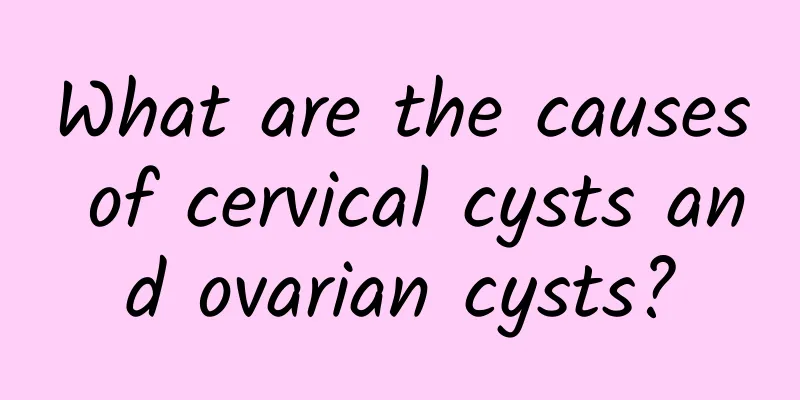How is Polycystic Ovary Syndrome Diagnosed?

|
The main clinical manifestations of PCOS are menstrual disorders, androgen excess and obesity. But how is PCOS diagnosed? Next, the editor will introduce the diagnosis method of PCOS, let us learn about it together. Diagnosis of Polycystic Ovary Syndrome 1. Blood hormone test shows abnormality. We understand that the entire ovulation process is regulated by various hormones in the body. Abnormalities in certain hormones in the blood (such as androgens, estrogens, insulin, etc.) are the key to causing polycystic ovaries. It should be noted that blood hormones should be taken within three months and do not contain any hormone drugs. The examination time should be in the early morning 3-5 days after menstruation. If amenorrhea occurs, blood can only be collected if no dominant follicle is detected by B-type ultrasound. 2. Menstrual changes Menstrual changes can be self-perceived, and there are three possible situations: No menarche. The age of menarche is older than that of the general population. Menstruation occurs a few months after menarche and the menstrual flow is very small. There was menstruation, then amenorrhea. 3. Multiple follicles on the ovaries This requires B-ultrasound, which can show that there are many soybean-sized follicles in the ovaries. Polycystic ovary syndrome symptoms Polycystic ovary syndrome (PCOS) often occurs in adolescence, and its main clinical manifestations are menstrual disorders, excess androgen and obesity. 1. Menstrual disorders It is the main symptom of polycystic ovary syndrome. The most common manifestation is scanty menstruation (35 to 6 months) or amenorrhea. After all, the money is often too little or the menstruation is scanty. It can also be manifested as irregular uterine bleeding, irregular menstrual cycle or menstrual volume. 2. Infertility Infertility is caused by the blockage of ovulation in women of childbearing age. 4. Hyperandrogenism Hyperandrogenism is the most common manifestation. There are varying degrees of hair, mainly genital hair, dense pubic hair with a male-like tendency, extending to the perianal area, groin or midline, and upper lip beard or hair around the areola. Fatty skin and acne are common, which is related to the accumulation of androgens in the body, which stimulate the exuberant secretion of sebaceous glands. 4. Obesity More than 50% of patients are obese (BMI (>25kg/m2), often with abdominal obesity (waist/hip circumference (>0.80). Obesity is associated with insulin resistance, androgen excess, increased free testosterone ratio, and leptin resistance. 5. Acanthosis nigricans The skin folds on the labia, neck, back, armpits, breasts, groin, etc. are gray-brown pigmented, symmetrical, with thickened skin and soft texture. Polycystic ovary syndrome (PCOS) is a common endocrine metabolic syndrome in women of childbearing age. It is characterized by chronic anovulation (ovulation dysfunction or loss) and hyperandrogenism (excessive secretion of male hormones in women). Its main clinical manifestations are irregular menstruation, infertility, and hyperandrogenism. Hirsutism and/or acne are the most common endocrine diseases in women. |
<<: Can premature ovarian failure in women be cured?
>>: Can I get pregnant with polycystic ovaries?
Recommend
Is microwave treatment effective for cervical erosion? Three questions about microwave treatment for cervical erosion
In life, the proportion of women suffering from c...
Nutritionist reveals: glutinous rice balls calorie ranking! He has the highest calorie... He can burn it off by taking one and walking briskly for 20 minutes
The Lantern Festival is a time for eating glutino...
Avoid getting fatter as you age, eat like the experts! Save the basal metabolic rate and avoid middle-aged obesity
Are you also troubled by middle-aged weight gain?...
Causes of premature ovarian failure
Causes of premature ovarian failure: The ovaries ...
What are the symptoms of pelvic inflammatory disease and how to prevent and treat it
Symptoms of pelvic inflammation generally include...
Common symptoms of adnexitis
http://www..com.cn/fuke/fuke/fjy/ Adnexitis is on...
Who says endurance runners have to be vegetarian? Nutritionists analyze...
Carl Lewis, an American track and field legend, i...
What should I do if my vaginal discharge smells sour? It is usually normal
It is normal for women to have a sour smell in th...
Experts describe the early symptoms of ectopic pregnancy
There are many early symptoms of ectopic pregnanc...
Causes of uterine fibroids
Among gynecological diseases, uterine fibroids ar...
What should you pay attention to after abortion
After a miscarriage, women need to pay attention ...
Paying attention to dysmenorrhea prevention measures can help us stay away from this disease
In our lives, more and more women are troubled by...
How much do you know about the two correct methods of treating cervicitis?
Cervicitis is a common disease among gynecologica...
What are the causes of miscarriage in early pregnancy? There are 5 reasons
Most early miscarriages are spontaneous miscarria...
Mooncakes don’t make you fat, and hawthorn tea can help you lose fat and relieve greasiness
When the Mid-Autumn Festival comes, delicious moo...









